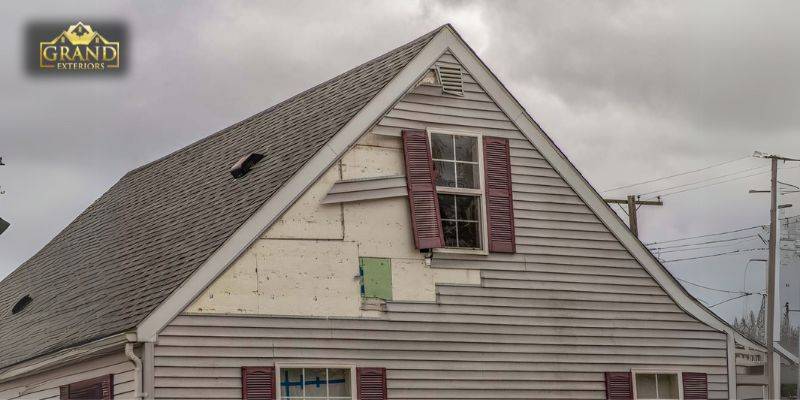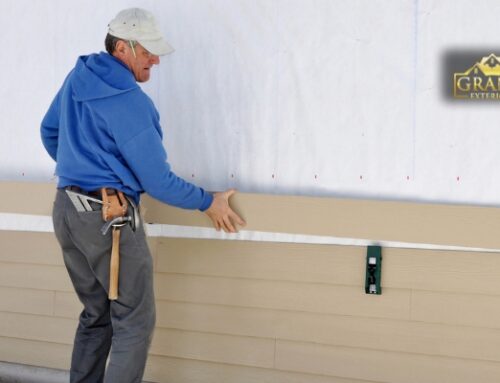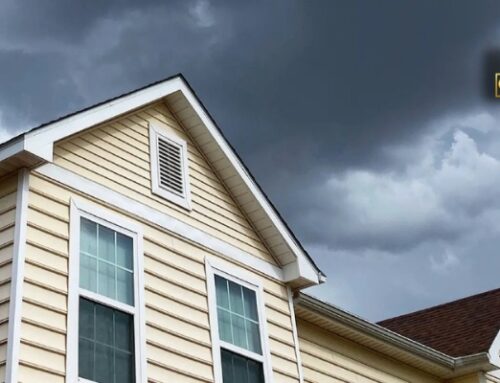Severe storms can do significant damage to roof and cause cracks, dents, panels gone missing or to unseen damages such as water penetration and overall ravages of structure. If your home has suffered from the wrath of high winds, hail or any number of relentless rains it is important for you to act soon after that you check the state of your siding. Unattended storm damages will cause small damage into bigger problems such as mold & insulation issues and will make an expensive repair later on. Preventive measures while doing it can mean that you do not let a minor problem get worse, and the house exterior is still sound and attractive.
Handling siding damage after a storm includes complete inspection, timely repair and preventive measures to strengthen your home for future weather events. From the spot to repair or replace the damaged glasses, understanding the correct approach can save time and money from the right approach, ranging from spotting signs such as loose panels. Additionally, working with professionals for a specialist assessment and documentation of damage to insurance claims can make the recovery process smooth. In this guide, we will make you walk through the stages required to handle the siding position of your home after a storm, making sure that your property remains safe and well preserved.
Hurricanes can cause significant damage to your home siding, leaving behind visible and hidden issues that require immediate attention. To leave dents and cracks from high winds to closure, storm damage can compromise your home integrity if not addressed quickly. Taking the right steps after a storm, it ensures that your siding remains durable, your home remains preserved, and expensive future repairs are avoided.
There are ten essential steps below to handle your siding position after the storm.
1. Carry out a full visual examination
Before proceeding with any other action, thoroughly examine the siding of your house from the ground.
- Observe cracks, dents, holes, or missing sections due to wind, hail, or debris. Look for loose or warped panels, as high winds can loosen their fastening.
- Find water spots, which could be signs of moisture damage.
- If the damage seems extensive, document it with photos.
2. Check for hidden water damage
Not all storm damage is visible.
- The water may penetrate behind the siding panel and lead to mold or rot.
- Test with your hand for softness or swelling with siding.
- Check for peeling paint, bubbling finish, or smells since they are signs of water entrapment.
- In case of water infiltration, a moisture meter will prove useful in detecting concealed humidity.
3. Clean the surface and remove debris
- Storms will get dirt, branches, and other trash stuck onto your siding.
- Clean siding with a hose or power washer to lightly scrub away loose dirt.
- Clean using a light detergent and soft brush without causing harm to the material. Clean any trash stuck between panels or crevices to avert further deterioration.
4. Safe loose siding panels
If the storm has loosened your siding, secure it quickly to prevent further damage.
- Reattach panels using nails or fasteners, but avoid forcing them in place if they are deformed.
- If large sections are loose, reinforcement strips or a professional siding repair may be required.
- Using temporary fix, such as duct tape or plastic sheets, can help protect exposed areas until repaired.
5. Assess the requirement of repair versus replacement
Not all siding damage requires complete replacement – some issues can be fixed with minor repairs.
- Small cracks, dents, or scratches can often be patches, can be re -painted, or filled with sealants.
- Large damage, such as deformed, missing, or heavy damaged panels, may require complete replacement.
- If the siding is old and already wearing, it can be a better investment to change rather than repair.
6. Document damage to insurance claims
If the storm causes significant damage, your homeowner’s insurance can cover repairs.
- Take clear photos and videos of all visible damage before any repair.
- If possible, write the date and details of the storm, including the wind speed and the shape of hail.
- Contact your insurance provider and file a claim with the required documents. If necessary, hire a professional inspector to assess the damage for an official report.
7. Consult a professional for a inspection
If you are uncertain about the range of damage, it is best to obtain a professional assessment.
- A siding expert may identify hidden damage and structural issues that may not appear.
- Professionals have equipment to detect moisture infiltration and insulation damage.
- A specialist ensures that you do not ignore potential long -term problems.
8. Select the appropriate siding material for future protection
If you have to replace the siding, think about going with storm-resistant siding.
- Vinyl siding is cheap and has good durability but cracks at extreme temperatures. Fiber cement siding offers great moisture protection and fire resistance.
- Spending on effect-resistant siding can avoid considerable damage from future storms.
9. Storm proof your home
Precautions can reduce the risk of siding damage from future storms.
- Trim branches that can fall and damage your siding.
- Clean downspouts and gutters to prevent water construction.
- Install storm shutters or effect resistant windows to protect outside your house.
- Check the siding regularly for early wear and tear signs.
10. Do not delay repair to avoid further damage
- Avoiding siding repairs can cause more severe structural problems. Inaccessible cracks and holes may allow moisture to leak, leading to mold and rot.
- Loose panels can be completely different in another storm, making repair more expensive.
- Acting quickly makes sure that your home remains untouched, energy-skilled and preserved.
Conclusion
In order to manage your siding role once the storm passes needs promptness, complete examination and integration of adequate repair. By evaluating damage, tightening loose panels, cleaning out debris and advising experts, you can keep damage from continuing and safeguard the integrity of your house. If your siding has already experienced serious damage, thennconsideration of storm-resistant material as a replacement can be beneficial to your home’s security against future weather extremities. Siding maintenance and prompt repair will be necessary in order to place your siding on top and to prevent costly restorative work.




